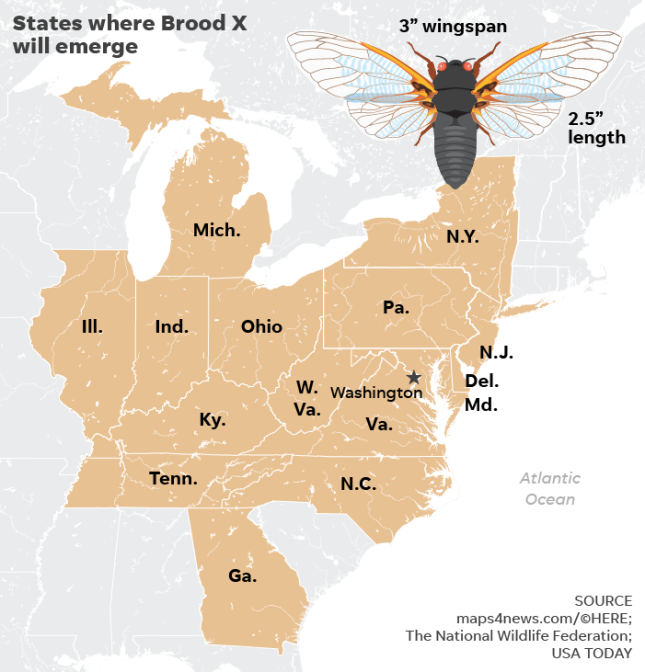Wild Birds Unlimited is re-opened at this location, check us out in-store.
Our showroom is now open to the public, come by our store and see new exclusively in store products. You can still place an order with us online at mywbu.com/arlingtonva.
BROOD X IS HERE
If you're wondering about the effects of Brood X Cicadas on birds, read below the image for some information.
The 17 year cicadas are back! Brood X is about to emerge from underground and take over the East Coast for the next several weeks, so here's some fun facts about cicadas and their impact on the local birds:
The Impact of Periodical Cicadas on Birds
- Adult cicadas are large, easily captured and readily consumed by a large number of bird species.
- Due to the abundant supply of periodical cicadas to prey upon, activity at bird feeders is likely to drop during the 6-7 weeks the cicadas are emerging and active.
- Long-term activity at bird feeders may increase due to the increase in bird populations (due mostly to increased fledging success) for the next one to three years.
- Long-term feeder activity may also increase due to the increased damage to trees and the subsequent loss of tree nuts and fruits.
- Studies have shown that some bird species experience one or more of the following impacts during periodical cicada emergence years.
- increased number of nests
- earlier breeding
- larger clutches
- increased nestling body mass
- increased rates of nestling survival
- significantly higher fledging success.
- Research has determined the following specific population changes:
- Yellow and Black-billed Cuckoos’ populations increased to high numbers only during emergence years and then declined to average population levels
by the following year. - Red-bellied Woodpeckers, Blue Jays, Common Grackles and Brown-headed Cowbird populations increased significantly for 1-3 years following emergences and then declined to average population levels.
- Red-headed Woodpeckers, American Crows, Tufted Titmice, Gray Catbirds and Brown Thrasher populations show a significant population increase during the year following an emergence, and then stabilized to average population levels by the second year after the emergence.
- Wood Thrushes, Northern Mockingbirds, Northern Cardinals, House Sparrows, Red-eyed Vireo and Eastern Towhee showed insignificant changes to their populations during or after emergence years.
- Yellow and Black-billed Cuckoos’ populations increased to high numbers only during emergence years and then declined to average population levels
So again, don't be alarmed if your feeders aren't getting as many birds the next few weeks! Several species of birds will be getting the majority of their sustenance from the cicadas and won't be spending as much time at your feeders. That being said, you should still keep your feeders well-stocked for the smaller birds that don't typically eat insects (chickadees, wrens, etc). They'll still be relying on you to keep them fed, because they won't have much in the way of natural food sources until later this summer.


